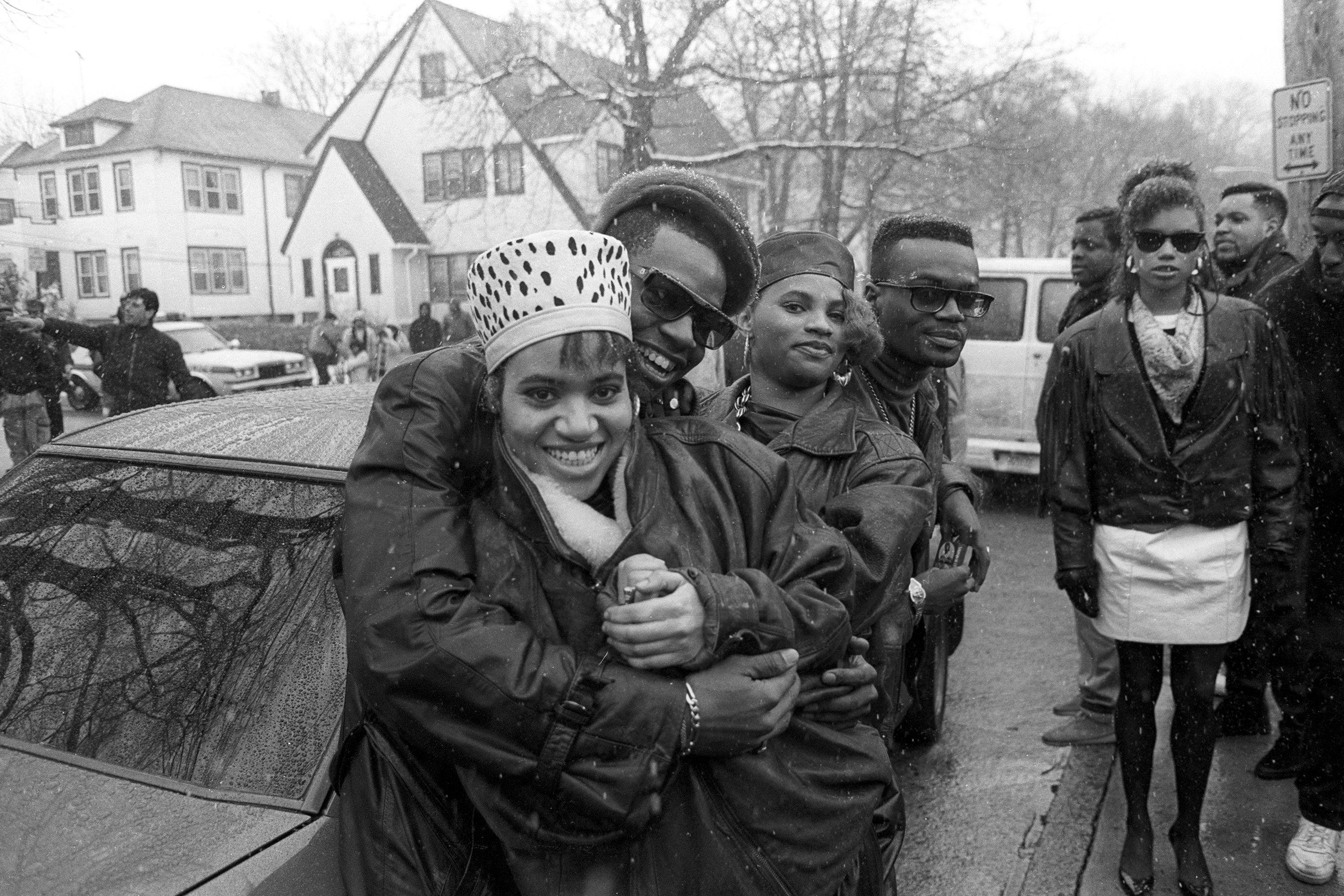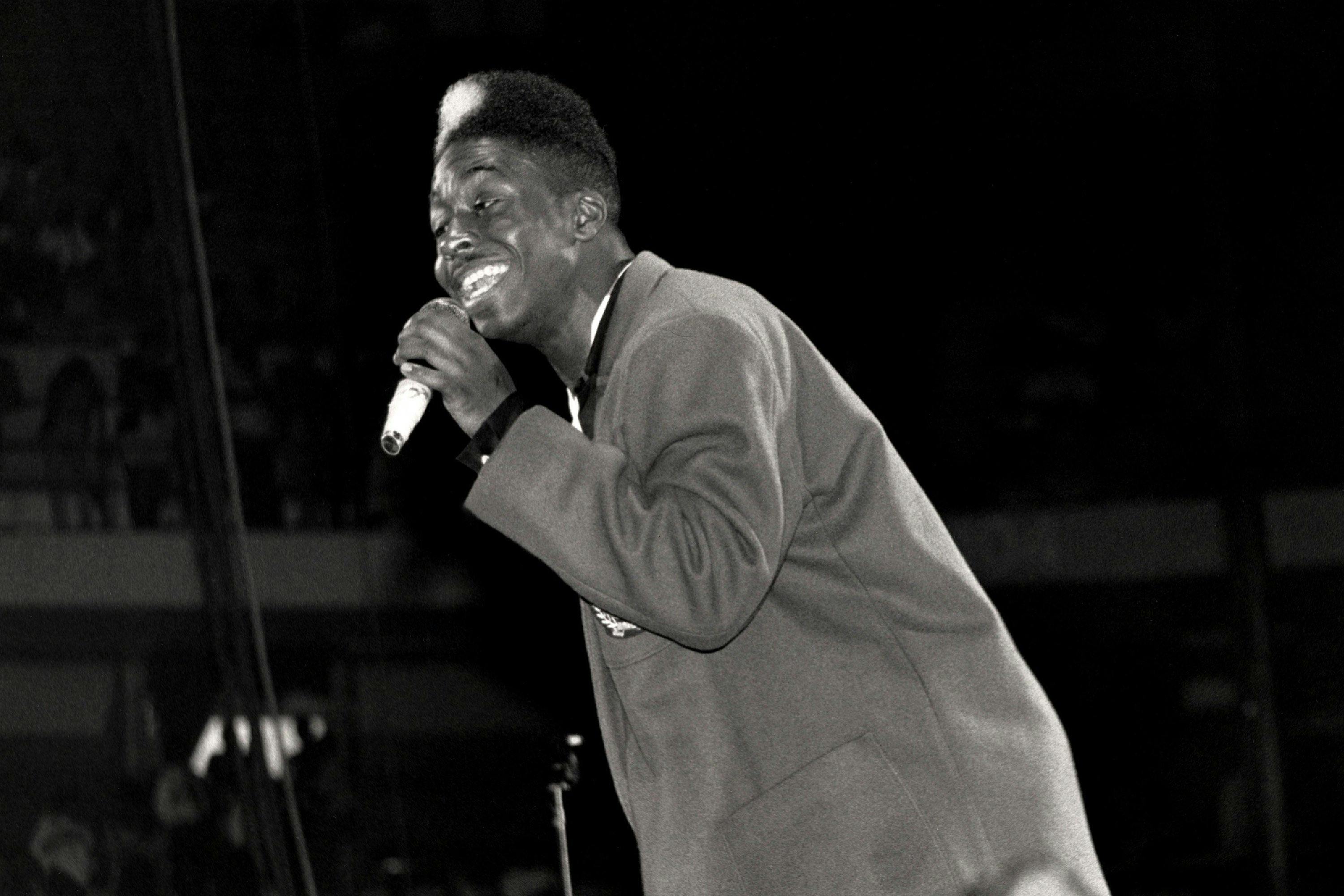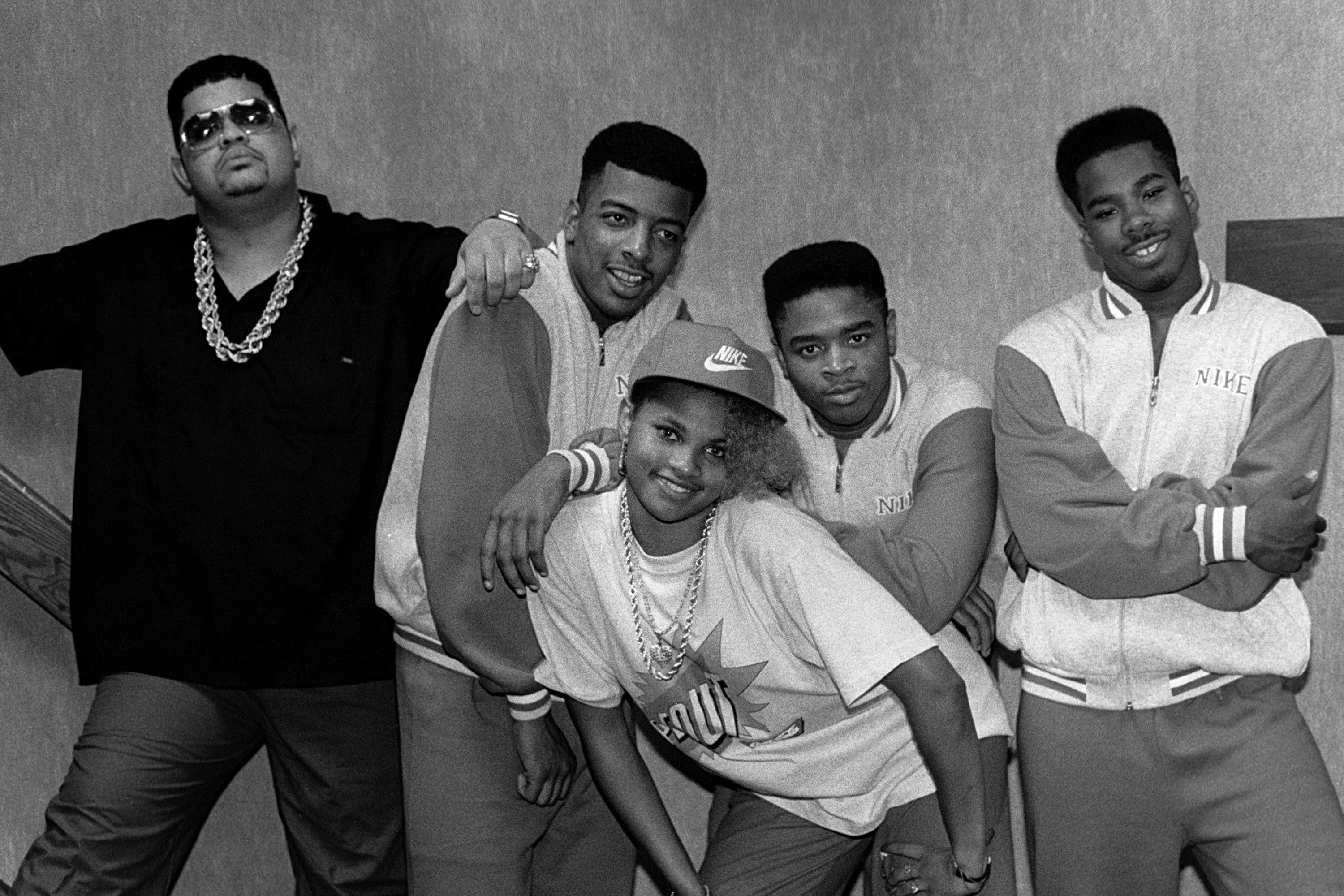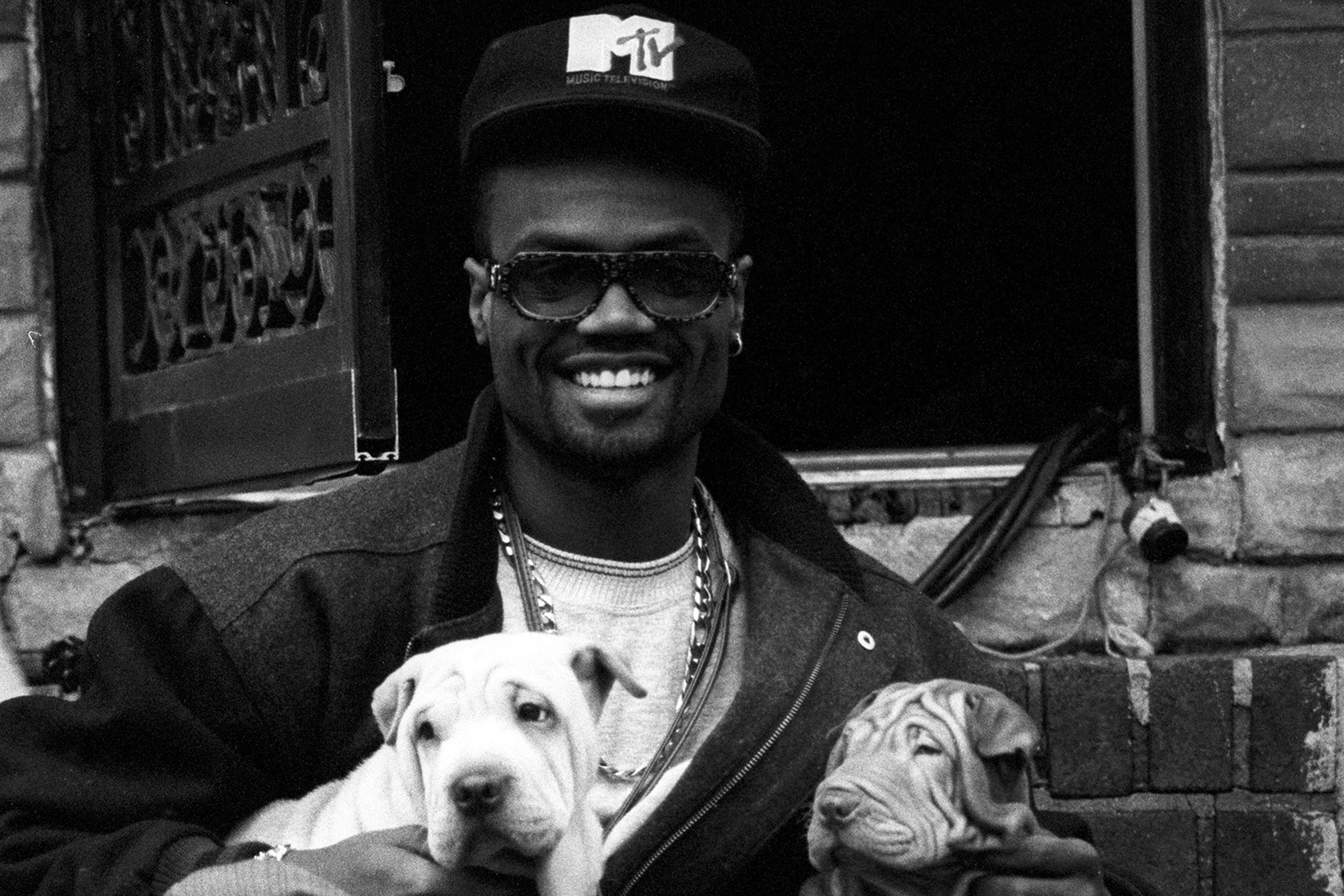
Salt-N-Pepa and The Backlash Against Pop Rap
Salt-N-Pepa and The Backlash Against Pop Rap
Published Wed, July 22, 2020 at 2:04 PM EDT
After “Push It” became a hit in 1987 and was re-released to even wider success in early 1988, Hurby Azor’s accomplishments with Salt-N-Pepa put him in a position to launch his own production and management company. Before it even had a name, the fledgling business was built around friends from the Elmhurst, Queens neighborhood: Salt-N-Pepa, Kid ’n Play, Sweet Tee, Kwamé, and Dana Dane, among others. The name? Idol Makers. It was a family affair. Everything they did was born of the creativity within each other.
“Play [of Kid 'n Play] designed the SNP logo, he sketched it all out,” Salt explains, recalling how the iconic Salt- N-Pepa jacket came from within the crew. “We had our own camp. So the jacket was designed on that personal level.”
The Idol Makers camp featured artists churning out catchy, radio-friendly rap tunes that got a lot of airplay outside of the typical underground rap stations. The crew, along with fellow rap hitmakers like Heavy D & the Boyz and DJ Jazzy Jeff & the Fresh Prince, was pushing the genre into pop and R&B spaces that had previously ignored it. And they all shared a bond.
“Kid was always bugging out and Play was like Salt,” Pepa says of the Idol Makers days. “We shared tour buses together [with] Heavy D & the Boyz. Kwamé, Sweet Tee, all of us, Dana Dane, we were family.”
And it was Salt-N-Pepa’s popularity that set the stage for the Idol Makers’ successful late ’80s run.
“When everyone had their music come out, Salt-N-Pepa was already big,” Pep adds. “We were opening the doors for everyone. That’s what it was about.”


Photos by Al Pereira/Getty Images/Michael Ochs Archives
Dana Dane (“Cinderfella Dana Dane”), Sweet Tee (“On the Smooth Tip”), and Kwamé (“The Rhythm”) all saw major success in 1988 and ’89. Kid ’n Play scored hits with “Make It Funky” and “Rollin’ With Kid ’n Play” before landing starring roles in the New Line Cinema comedy House Party.
Hurby was unapologetic in wanting to make poppy records.
In the late 1980s through the early 1990s, as Hip-Hop saw groundbreaking, impactful releases by political rappers like Public Enemy and gangsta rappers like N.W.A., audiences saw some divide over Hip-Hop credibility. Pop rap acts suddenly became criticized for their success with mainstream audiences, and Salt-N-Pepa caught additional flak as women.
“One DJ in New York dissed us,” Pepa says. “They were always playing all the dudes. I used to be like, ‘We’re selling more, we’re killing it, why aren’t we getting the same respect?’ The same DJ came up to me [recently] and said, ‘I just want to say I apologize. I rode with the guys. I shitted on y’all,’ basically.”
Like Salt-N-Pepa, DJ Jazzy Jeff & The Fresh Prince were at the forefront of the radio rap wave. Jeff remembers the criticism.
“You didn’t feel it in the beginning,” Jeff says. “Salt-N-Pepa, Kid ’n Play, all of us pretty much came out around the same time. There wasn’t a division in Hip-Hop. One of the first big tours we went on was Salt-N-Pepa, DJ Jazzy Jeff and The Fresh Prince, Run-D.M.C., Public Enemy. That covered the spectrum. Hip-Hop hadn’t gotten to the point where we had subgenres. It was just Hip-Hop. All of that started changing when everybody got put in certain categories.”
Pop rap got Hip-Hop on the radio, and it was not just pop radio but also R&B radio rotations that were embracing these artists. But some hardcore fans were skeptic about who could claim ownership of Hip-Hop’s voice, something that frustrated DJ Jazzy Jeff to no end.


Photos By Raymond Boyd/Getty Images
“Anything that got notoriety from the white audience or the pop audience, you were automatically put in this box like you weren’t Hip-Hop or you were from the suburbs. Will grew up around the corner from Steady B! There wasn’t an ounce of the suburbs in my upbringing!”
“I remember going to see MC Hammer in Philadelphia at a sold-out concert before he put out ‘U Can’t Touch This.’ Once he put out ‘U Can’t Touch This,’ it was like, ‘Oh, he’s wack, Hammer’s not real.’ Everybody loved Kris Kross and once Kris Kross blew up, everybody started saying ‘Kris Kross ain’t real.’ That was a crazy time.”
“I’m like, ‘What do you consider real Hip-Hop?’ ” Jeff says. “Because I’ve been around since the start of this.”
Salt-N-Pepa had to vault over skeptics with sheer commercial clout. No one could deny their hits or their staying power.
“We were women, and we weren’t being treated fair in the game,” Pepa tells ROCK THE BELLS. “But we owned ours. We kept going and knocking down doors until they had to respect us.”
Regardless of any critics, Hurby’s commercial success gave him serious industry clout. Kwamé was an ambitious teenager when his older friend Azor heard his demo. Taken under Azor’s wing, Kwamé viewed their dynamic as one of little brother and big brother. “Everybody else was more like Hurby’s peers,” he explains. “Kid ’n Play grew up with Hurby. Dana is more like a peer. Salt is his girlfriend, Pepa’s her best friend. I was the young guy.”
Seeing Azor’s success was a huge motivator for the then-16-year-old.
“This is a management company-production company being formed by 24-year-olds,” Kwamé says. “I’m 16, [so] I’m looking at him like [he’s] a grown man!”
Having worked with talent such as LL COOL J, Missy, and Vivian Green, Kwamé has one of the more successful résumés in Hip-Hop and R&B production. As he puts it, “I’ve always used Hurby and Idol Makers as a learning tool. My whole strategy as a producer is based on Hurby. How I maneuver is based on Hurby.”
Azor’s ambitions, to put together a crew around his production company and brand them as such; and to make rap records that reached pop and R&B audiences en masse, foreshadowed what would become commonplace in just a few short years. Salt states it succinctly:
“I’ve always called him ‘The first Diddy.’ ”

Photo by Al Pereira/Getty Images/Michael Ochs Archives
* Banner Image: SALT ‘N’ PEPA / Photo by David Redfern/ Redferns



